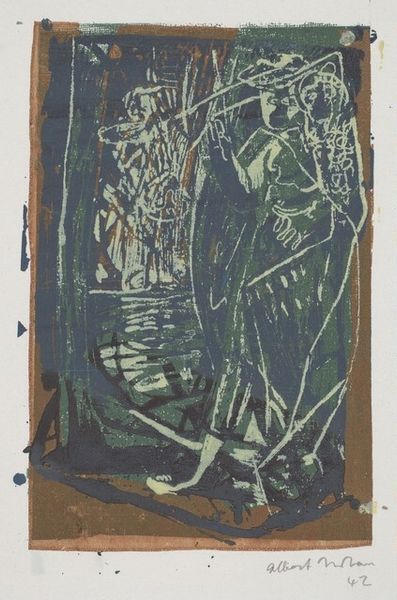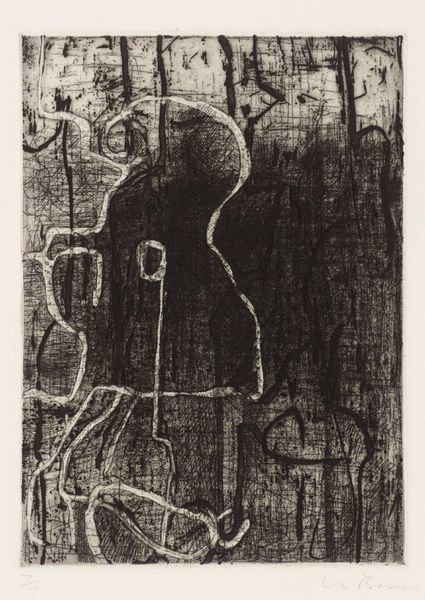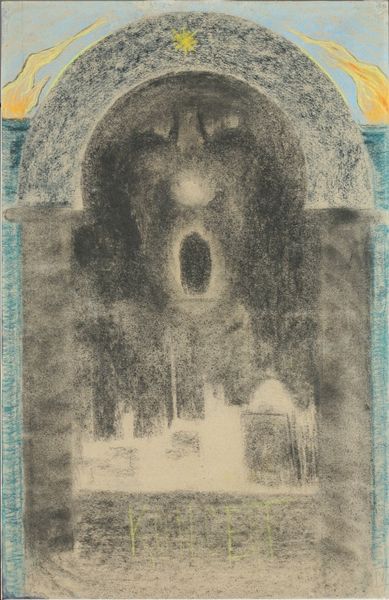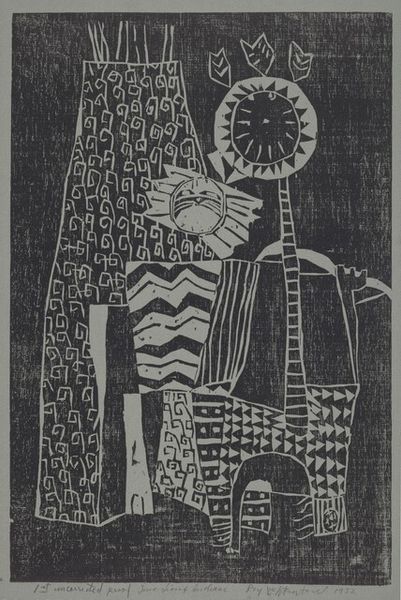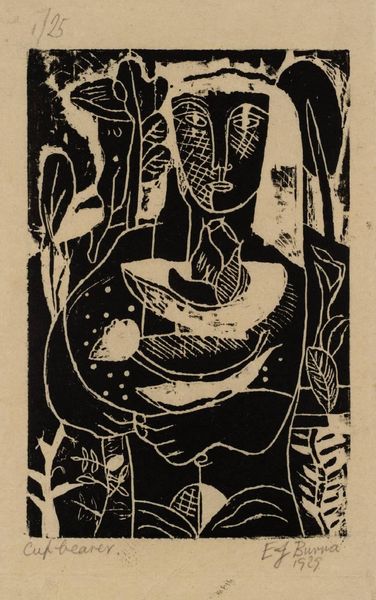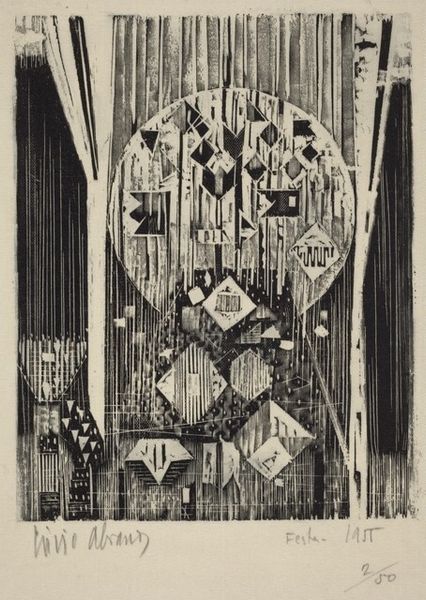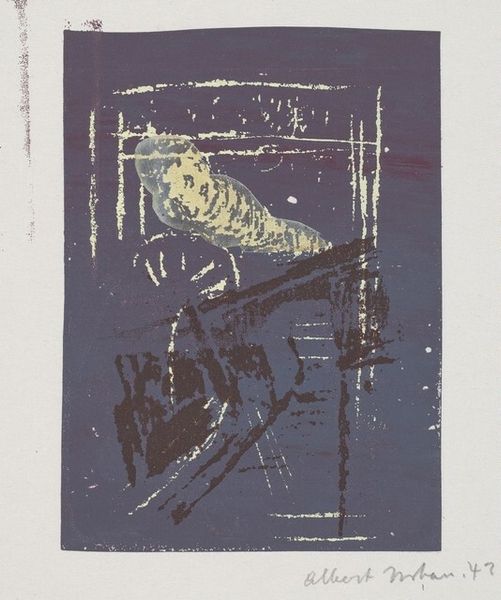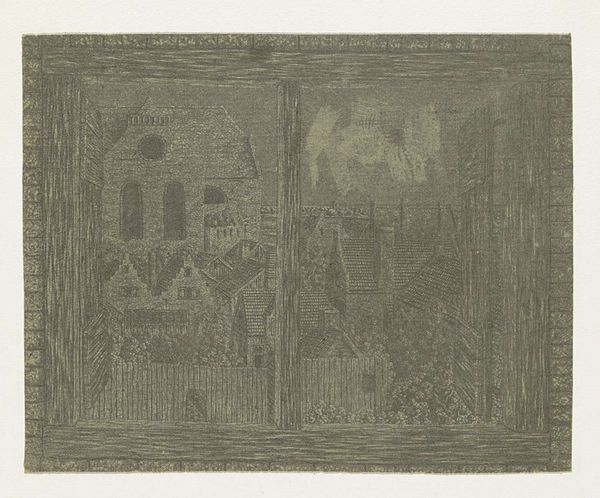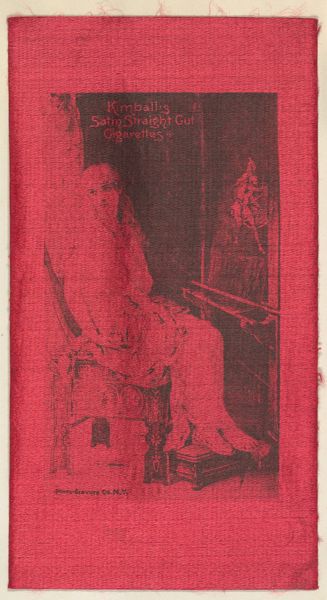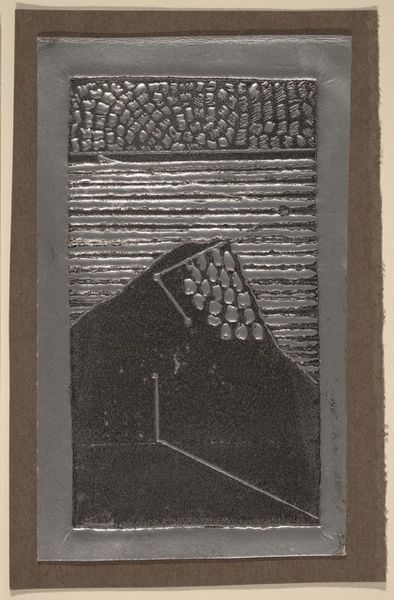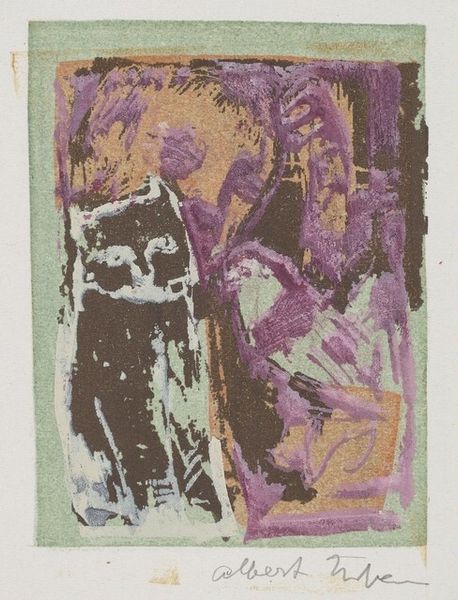
print, linocut, woodblock-print
#
ink painting
#
linocut
# print
#
linocut
#
asian-art
#
figuration
#
linocut print
#
woodblock-print
#
line
Copyright: Kiyoshi Saito,Fair Use
Editor: So this is "Miroku," a 1960 print by Kiyoshi Saito. The linework feels really stark, almost severe, but there's also a real sense of stillness in the figure. What do you see in this piece, especially regarding its historical or cultural context? Curator: It's striking how Saito engages with the visual language of traditional Buddhist iconography, specifically the bodhisattva Miroku, yet filters it through the lens of mid-century modernism. Think about the social upheaval in postwar Japan; the search for new cultural and spiritual anchors. Doesn't the print resonate with this tension between tradition and modernity? Consider how Saito's choice of linocut, a medium often associated with folk art and social commentary, democratizes the image. Editor: That makes a lot of sense. I was mainly focusing on the visual contrast, but it is really interesting when considering this choice in materials through this lense of democratizing this image in postwar Japan. Curator: Exactly! And what about the figure’s contemplative pose, the downturned gaze? Does that invite a reading of quiet resistance or perhaps an introspection around shifting social values? Saito isn’t simply reproducing an image; he's prompting a dialogue about identity, belief, and cultural belonging in a rapidly changing world. What do you think the implications are by stripping it of its traditional colorful nature? Editor: It’s really made me consider how choices around medium and style affect how viewers from the time understood their cultural identity. And it's powerful to consider how this print, through its abstraction and the context you've shared, acts as an active agent in that dialogue, questioning and redefining what it meant to be Japanese at that moment. Curator: Precisely. And, perhaps more universally, it probes the broader human experience of negotiating tradition and progress, something that continues to resonate deeply across cultures and generations. Editor: Absolutely, thank you so much. I’ll definitely look at art differently from now on!
Comments
No comments
Be the first to comment and join the conversation on the ultimate creative platform.
